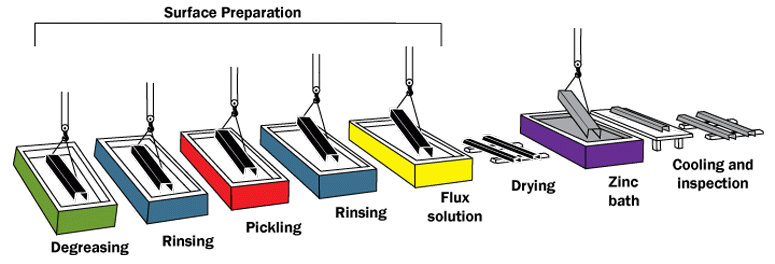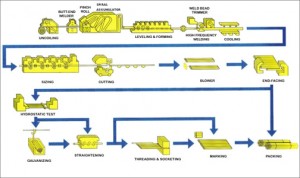Tanya Galvanizers is a prominent hub of galvanized services. To avail the best and high quality galvanized services, resort to one and only galvanizing company Tanya Galvanizers as it assures you to cater with right quality services. It serves with different big and small services like hot dip galvanization and many more. Catering to a large segment of clients all over India, Tanya Galvanizers showcases 10 real benefits of galvanized steel. These benefits are mentioned below:
Usage of Galvanizing for structural steel protection renders ten major benefits that cannot be ignored.
- Lowest First Cost:
Talking about the first cost, galvanizing is considered to be lower than any other commonly specified protective coatings for steel. This is due to increase in the application cost of labor intensive coatings like painting as compared to the cost of factory operations like galvanizing.
- Lowest Long Term Cost (low maintenance):
Galvanizing is considered to be invariably cheap in long term though its initial cost is considered to be higher than alternative coatings. Maintenance in the long term surely adds on to the cost which is not the problem in case of galvanization.
- Long Life:
On typical structural members, the life expectancy of galvanized coatings is far in excess of 50 years in the most rural environments and in case of severe urban and coastal areas, this may add up to even 20 to 25 years.
- Reliability:
Following the norms, the galvanization process by galvanizing plant manufacturers is done as per Australian/New Zealand Standard 4680 with minimum coating thickness. In such case, coating life and performance becomes reliable and predictable.
- Toughest Coating:
Having a unique metallurgical structure, the galvanized coating gives outstanding resistance to mechanical damage in transport, service and erection.
- Automatic Protection for Damaged Areas:
Galvanized coatings provide cathodic or sacrificial protection to small areas of steel that are exposed through damage. Here, small damaged areas are not required to touch up unlike organic coatings.
- Complete Protection:
A complete protection is availed for every part of galvanized article including recesses, sharp corners and inaccessible areas. The protection remains intact even if no coating is applied to a structure or fabrication after completion.
- Inspection Process is Easy:
As the galvanized coatings can be assessed directly by naked eye, a simple non-destructive thickness testing methods can be used for the same. The galvanized coatings can be termed sound and continuous if they appear to be the same.
- Faster Erection Time:
There is no wastage of time on-site in case of surface protection, inspection and painting as the galvanized steel members are ready for use. Once the assembly of the structure gets completed, it can be used immediately for the next construction stage.
- A Full Protective Coating Can Be Applied Within No Time:
The galvanized process does not depend on weather conditions hence, the coating regardless of any weather can be applied within no time.
Thus, this hot dip galvanizing consultant – Tanya Galvanizers assures to use the best practices of galvanizing ensuring to cater every listed benefit above to its clients!
For more information Visits: http://www.galvanizers.co.in/about.html



